There are many of oceanic plates in the ocean. So, what are the characteristics of oceanic plates? Therefore below here, there are 17 characteristics of oceanic plates. Before that, we should know what is the oceanic plate is. The oceanic plate is a plate located under the ocean, with a thickness of about 10 km. Oceanic plates are generally below sea level like some of the Pacific plates.
The formation of oceanic plates is thick on some oceanic backs. In the middle back of the ocean, magma erupts into the ocean where the crack zone lies. The addition of new rocks is then pushed the horizontal plate first created away from the cracks. The oceanic plate consists of oceanic crust. Its surface is enveloped by marine sediments derived from land which is granitic because it comes from the weathering of the continent.
The oceanic plates are divided into two crustal plates, they are large and small plates. The large plate is a plate that covers one ocean floor even covering the oceans and continents. Each of big plate is bounded by a mid-oceanic ridge, ocean trench, and ocean ridge. Therefore the small pate is formed by the convergence of the large plate. The characteristics of these small plates are to have fast and complex movements.
See Also :
There are 17 characteristics of oceanic plates below here refer to the crustal plates, movement, and plates boundary. So, these are the 17 characteristics of oceanic plates which are the major of large and small of crustal plates.
1. Pacific Plate
 Pacific plate is the largest crustal plate on earth, it covers about 103,300,000 square kilometers of our planet. The deepest point in the ocean is in the Mariana Plate overrides the plate creating the Mariana trench.
Pacific plate is the largest crustal plate on earth, it covers about 103,300,000 square kilometers of our planet. The deepest point in the ocean is in the Mariana Plate overrides the plate creating the Mariana trench.
The 90 percent of the world’s earthquakes and 81 percent of the world’s largest earthquakes occur in the region. Tsunamis are generated by large earthquakes and that is the reason 90 percents of the world’s tsunamis also occur in the Pacific Ocean.
In the Pacific ocean, it’s surround by large and small crustal plates. The plate movement in Pacific plate is caused by subduction zone that causes tsunamis, volcanoes to erupt and large earthquakes in each subduction zones.One the great example of volcanoes eruption is Mount Pinatubo in 1992. It’s an example of a composite volcano, this volcano is fueled by hot spots and spreading ridges where molten rock from the upper mantle flows out on the ocean floors creating basalt rocks.
2. Eurasian Plate
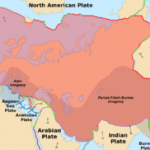 The Eurasian Plate is located in the most of the continent Eurasia. It’s a land mass consisting of the traditional continents of Europe and Asia. In this plate also includes all the islands in Europe and Asia.
The Eurasian Plate is located in the most of the continent Eurasia. It’s a land mass consisting of the traditional continents of Europe and Asia. In this plate also includes all the islands in Europe and Asia.
Some of them include the United Kingdom, Japan, Philippines and Sri Lanka. The Eurasian plates have surrounding many of tectonic plates; on the South is Arabian Plate, on the East is Phillippine Plate, on the west and southwest are North American Plate and African Plate.
This plate moves north two centimeters every one year, it’s the third slowest-moving plate, behind the North American and South American tectonic plates. It is movement created by the flow of magma beneath the Earth’s surface. The magma will heat up and boils and then it creates convection of currents.
Its convections are magma heating, rising and then cooling when it hits the ocean water by creating new rock. Eurasian plates are moving with apart which is caused by spreading or rift valleys. Then, the new crusted is created by magma pushing up from the mantle, due to pressure and it will be colled down when contact with the ocean water.The example of the convergent boundary is like Iceland, The eruption was due to two plates converging and the magma also rising from the mantle due to pressure.
3. Indian Plate
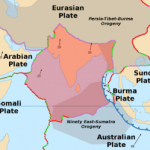 The Indian plate is located in the northeast hemisphere and it’s bounded by four major plates; Eurasian plate (North), Australian Plate (South East), African plate (South West) and Arabian plate (West).The Indian plate moves northward relatives to the Eurasian plate wich a convergent boundary is created.
The Indian plate is located in the northeast hemisphere and it’s bounded by four major plates; Eurasian plate (North), Australian Plate (South East), African plate (South West) and Arabian plate (West).The Indian plate moves northward relatives to the Eurasian plate wich a convergent boundary is created.
As the Indo-African boundary is divergent. The western Indo-Arabia boundary is transformed boundary which is lateral relative to each other giving rise. The boundaries of this plates are moving mostly in a circle. Though it’s trying to move Northeast, the other plates are pushing back and it’s rotating slightly.
The most common results of the Indian plate interacts with other plates are mountains, earthquakes, and occasional volcanoes. The Indian plate is still active and drifts at a velocity of about five centimeters per year, earthquakes occur in the northern part of the plate. The largest recorded earthquake occurred near New Delhi in 1950 and had a magnitude of 8.5.
4. Indo-Australian Plate
 The Indo-Australian plate is one of the major tectonic plates which consists of the continental crust of the Australian continent and the Indian sub-continent. The Indo Australian plate is surrounding five major of tectonic plates, they are Arabian Plate, The North is Eurasian Plate, The southwest side is Antartic plates the western is African plates and the southwestern is Pacific Plate.
The Indo-Australian plate is one of the major tectonic plates which consists of the continental crust of the Australian continent and the Indian sub-continent. The Indo Australian plate is surrounding five major of tectonic plates, they are Arabian Plate, The North is Eurasian Plate, The southwest side is Antartic plates the western is African plates and the southwestern is Pacific Plate.
The boundary of Indo-Australian plates most are convergent. The evidence example of the convergent boundary is between Indo-Australian and Eurasian plate that created the Himalayas that are southern parts of Asia.
The Indo Australian plates are changes over time because the northeastern part of the plate formed a convergent boundary with the Pacific plate. The Indo Australian plates which have led to the formation of the Indonesian islands. The earth is changing if islands are forming.The Indonesian great earthquakes in Sumatra is the result of the northern movement of the Australian plate beneath Eurasia.
5. African Plate
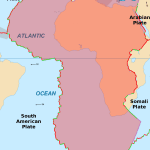 African plate lies between the continent and various surrounding of the ocean ridges. Around 60 million years ago, the Somali Plate began rafting from the African plate along the East African Rift. The movement of African plate is about 2.15 cm per year. It moves over the past 100 million years in a general northeast direction.
African plate lies between the continent and various surrounding of the ocean ridges. Around 60 million years ago, the Somali Plate began rafting from the African plate along the East African Rift. The movement of African plate is about 2.15 cm per year. It moves over the past 100 million years in a general northeast direction.
The African plate is bounded by the Red Sea Rift where the Arabian plate is moving away from the African Plate. There is largest volcanoes eruption in 2002 at Mount Nyiragongo in the Democratic The Republic of Congo.
The volcano erupted along fractures on the southern flanks. The lava flows reaching the nearby of the city of Goma, it left 120,000 people homeless. The African plate is known as the largest seismically active rift, it trends North until South parallel to the rift system. That’s why in here many big earthquakes happen.
6. North American Plate
 The North American plate was created approximately three billion years ago. It covers North America, Greenland, Cuba, The Bahamas and some part of Iceland and the Azores. This plate is the biggest plates because it covers 75,900,000 km squared.
The North American plate was created approximately three billion years ago. It covers North America, Greenland, Cuba, The Bahamas and some part of Iceland and the Azores. This plate is the biggest plates because it covers 75,900,000 km squared.
The North America plate moves roughly a southwest direction away from the Mid Atlantic Ridge. There are a few hotspots found in here, the most notable hotspots are the Yellowstone (Wyoming), Raton (New Mexico), and Anaheim (British Columbia).
These are taught to be caused by a narrow stream of hot mantle convecting up from the Earth’s core-mantle boundary called a mantle plume. The Yellowstone and Anaheim hotspots are still geologically active to creating the earthquakes and volcanoes.
7. South American Plate
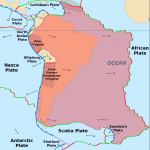 South American Plate is a large plate and it’s located on the continent, South America. The South American plate is bounded by African plate in the East, Nazca plate in the west, Arctic plate and Scotia plate in the south also Caribbean plate and North America plate in the north.
South American Plate is a large plate and it’s located on the continent, South America. The South American plate is bounded by African plate in the East, Nazca plate in the west, Arctic plate and Scotia plate in the south also Caribbean plate and North America plate in the north.
The South American plate is one of the plates Pangea broke apart.It’s happened 200 million years ago which caused plate movements. South American and Nazca plates share the longest convergent boundary on earth, Andes Mountains.
Moreover, it extends over 700 km and it’s currently home to more than 200 potentially active volcanoes as South American Plate.
8. Antartic plate
 The Antartic plate is the fifth largest plate in the world. It roughly 60,900,000 square kilometers in area.This plate moves very slowly, unlike the other plates, because it is so big. The Antartic plate moves Northwestern towards the Pacific Ocean.
The Antartic plate is the fifth largest plate in the world. It roughly 60,900,000 square kilometers in area.This plate moves very slowly, unlike the other plates, because it is so big. The Antartic plate moves Northwestern towards the Pacific Ocean.
The Antartic plate is bounded almost entirely by extensional mid-oceanic ridge systems.The adjoining plates are Nazca Plate, South American Plate, African Plate, Somali Plate, Indo-Australian Plate, Pacific Plate and across a transform boundary, the Scotia Plate.
9. Nazca Plate
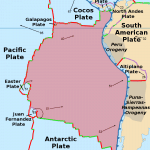 Nazca plate is the small oceanic plate off the coast of South America and it is the one of the fastest of any tectonic plate on Earth. It has five triple junctions where three different plates come together. In this plate also produced the largest earthquakes ever recorded by the seismograph.
Nazca plate is the small oceanic plate off the coast of South America and it is the one of the fastest of any tectonic plate on Earth. It has five triple junctions where three different plates come together. In this plate also produced the largest earthquakes ever recorded by the seismograph.
There are two large earthquakes recent past, they are on May 22nd, 1960 that earthquake near Valdivia was 9.5 on the magnitude scale and on February 27th,2010 that in the Maule Region of Chile was an 8.8 magnitude earthquake. The other large earthquake that is happened on June 9th,1994 in the region of the Amazon forest and it recorded at the depth over 300 km.
10. Arabian Plate
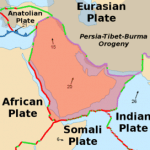 The Arabian plate is located in the middle east Region of Asia and it covers the area about 5,000,000 sq. It is formed boundaries with three major plates, the Eurasian Plate, African Plate and Indian Plate. The plate moves at about 4.65 cm per year in the northeast direction, it encompasses the continents of Africa and Southern Asia, along with its main water bodies of the Indian Ocean and the Red Sea.
The Arabian plate is located in the middle east Region of Asia and it covers the area about 5,000,000 sq. It is formed boundaries with three major plates, the Eurasian Plate, African Plate and Indian Plate. The plate moves at about 4.65 cm per year in the northeast direction, it encompasses the continents of Africa and Southern Asia, along with its main water bodies of the Indian Ocean and the Red Sea.
The Arabian plate consists of the Arabian Peninsula that extends the northward to Turkey. The Arabian Plate is important because it incorporates most of the world’s oil receive, then in structures, the Arabian plate includes a wide range and subvariety of all the three rock types, the igneous, the metamorphic and the sedimentary rocks.
In the Arabian plate, there is divergent, it’s the three main tectonic boundaries. The boundaries which include the Red Sea and Gulf Aden, Zagros-Taurus and the Dead Sea respectively. At Arabian Plate there is a mud volcano in the Arabian Sea, it is noticed by the Pakistani fishers. It formed underwater when the layers of clay become pressurized either by a build of hydrocarbon gases or by tectonic activity. The sediments that form Pakistan’s coastal plains and an offshore slope are been subducted by the Arabian Plate under the Eurasian landmass.
11. Caribbean Plate
 Caribbean plate lies in complex two major plates, North American plate, and Atlantic plate and two minor plates bordering on it. This plate has intense seismic activity, frequent earthquakes, and volcanic eruptions.There are 17 active and dangerous volcanoes here. It’s in the area Soufriere Hills on Montserrat and Mount Pelee on Martinique.
Caribbean plate lies in complex two major plates, North American plate, and Atlantic plate and two minor plates bordering on it. This plate has intense seismic activity, frequent earthquakes, and volcanic eruptions.There are 17 active and dangerous volcanoes here. It’s in the area Soufriere Hills on Montserrat and Mount Pelee on Martinique.
The Southern of Caribbean plate interacts with the South American Plate and the western of the plate includes Central America. Between the Caribbean plate, there is the Borth American Plate which is a transform boundary and a subduction zone.
In Puerto Rico, there are trenches and it runs between the plates and it’s the deepest part of the Atlantic Ocean. The deep of trench is 8,400 meters deep. The Caribbean side of the trench is Hispaniola, Puerto Rico, and the Virgin Islands.
12. Philippines Plate
 The Philippine plate is located in Southeast Asia, in the western Pacific Ocean and it lies beneath the Philippine Sea. This plate is a tectonic plate comprising of oceanic lithosphere. The Philippine plate is squeezed between the Eurasian and the Pacific plate.
The Philippine plate is located in Southeast Asia, in the western Pacific Ocean and it lies beneath the Philippine Sea. This plate is a tectonic plate comprising of oceanic lithosphere. The Philippine plate is squeezed between the Eurasian and the Pacific plate.
It consists of several microplates squeezed in between two convergent plate margins. There are two subduction zones in Philippines plate, they are Manila Trench, Northwestern and Philippine Trench, Southeastern.
The two of that zones are active subduction zones. The volcanoes in the Philippines which are considered as one of the deadliest in the world because they sit above subduction zones. The popular volcanoes that ever eruptions are Taal Volcano, Mount Pinatubo, and Mayon Vulcano.
13. Scotia Plate
 The Scotia plate located on the edge of the South Atlantic and the Southern Ocean. The Scotia plate is minor plate whose the movement is largely controlled by two major plates that surround it the South American Plate and Antartic Plate. The Scotia plate moves 2.2 cm per year, the name of Scotia plate its take name from the steam yacht Scotia of the Scottish National Antartic Expedition.
The Scotia plate located on the edge of the South Atlantic and the Southern Ocean. The Scotia plate is minor plate whose the movement is largely controlled by two major plates that surround it the South American Plate and Antartic Plate. The Scotia plate moves 2.2 cm per year, the name of Scotia plate its take name from the steam yacht Scotia of the Scottish National Antartic Expedition.
This plate is made of oceanic crust and continental fragments and that distributed around the Scotia Sea. Before the formation of the plate began 40 million years ago, these fragments formed a continuous landmass from Patagonia to the Arctic Peninsula along an active subduction margin. The Scotia Plate is bounded by the South American Plate forming the North Scotia Ridge.
The North Scotia ridge is a left lateral transform boundary with a transform rate of thoroughly 7.1 mm per year. Besides the southern edge of the plate is bordered by Antartic Plate. It sliding at rate 7.4-9.5 mm per year that occupies the southern half of the Antartic Scotia plate boundary. One of the most prominent features in the Scotia plate itself is the median valley known as the West Scotia ridge The ridge consists of seven segments separated by right lateral transform offsets of various lengths.
14. Cocos Plate
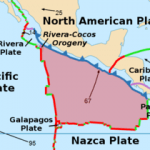 The Cocos plate is located in between Central or North America and South America on the Pacific ocean. It’s created by seafloor spreading along the East Pacific Rise and the Cocos Ridge. The Cocos plate moves 8.55 per year northeast. The Cocos plate moves away from the Pacific plate because it’s moving northwest.
The Cocos plate is located in between Central or North America and South America on the Pacific ocean. It’s created by seafloor spreading along the East Pacific Rise and the Cocos Ridge. The Cocos plate moves 8.55 per year northeast. The Cocos plate moves away from the Pacific plate because it’s moving northwest.
There is an island on Cocos Plate its name is the Cocos Island and it’s also the part of Costa Rica. There is no volcanoes or earthquakes. Besides, there is a hotspot located on the Galapagos Island which is the right on the boundary of the Cocos, Nazca, and Pacific Plate.
15. Rivera Plate
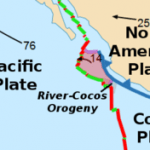 Rivera Plate is a microplate that is located off the west coast of Mexico, this plate has separated from the Cocos Plate located about five or 10 million years ago. Similarly to the Cocos plate, this plate subducts under the North American Plate along the Middle America subduction zone ate rate of approximately 30 mm per year.
Rivera Plate is a microplate that is located off the west coast of Mexico, this plate has separated from the Cocos Plate located about five or 10 million years ago. Similarly to the Cocos plate, this plate subducts under the North American Plate along the Middle America subduction zone ate rate of approximately 30 mm per year.
This plate is composed of undisturbed oceanic crust, with only some regions that are structurally complex, it’s along with Cocos and Rivera plate. There is ever the strongest earthquakes in the history of Mexico which occurred on June 3, 1992, in the state of Jalisco. The quake had a magnitude of 8.2 with magnitude 7.8 aftershock, both of which caused widespread casualties and damaged.
Hopefully, this information about 17 characteristics of oceanic planes will help you to know what is the characteristic each plate in all over the worlds.
See Also :